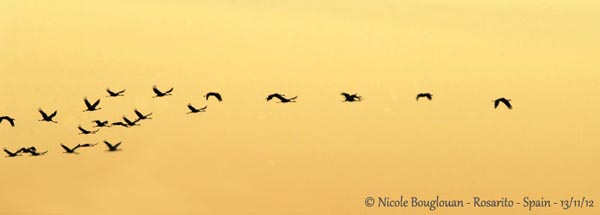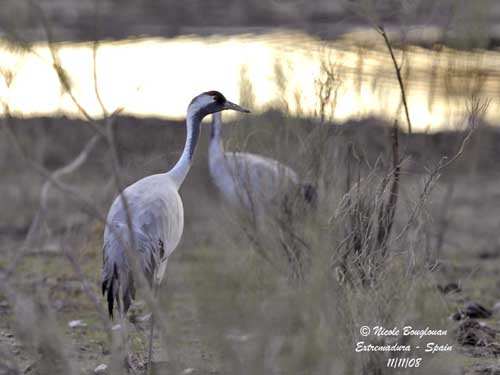
Text and pictures by Nicole Bouglouan
From an observation near the Sierra de Gredos in November 2012, and in other parts of Extremadura.
Sources :
Las alas del invierno - La migración de la Grulla Común
Pájaros de España (JL Beamonte)
Wikipedia, la enciclopedia libre
Other link within the website: The Common Crane
Common Cranes in Spain
Back to roost
After several hours dedicated to feeding in the harvested fields or below the cork-oaks, the Common Cranes gather in large flocks before to take flight in order to return to their nightime roosts.
These large birds often roost in wet areas such as lagoons, ponds, estuaries or dams, providing them good protection against terrestrial predators.
They favour islets for sleeping, but they also can rest in the water where they are less threatened than in open areas.

During the day, they feed on cereals or acorns, scattered in fields or in the dehesa in Extremadura. They feed in family groups of three-four birds, usually the pair with one or two young birds with brown head, within a large flock.
The Common Crane is territorial during the breeding season, but it is rather gregarious outside this period.
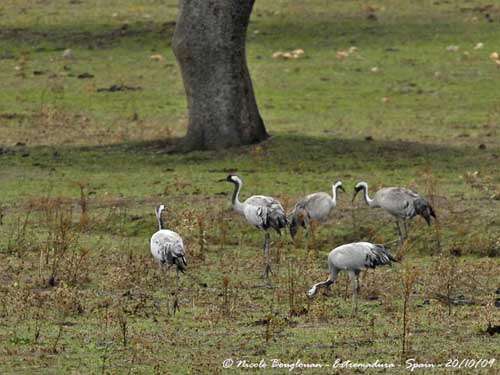
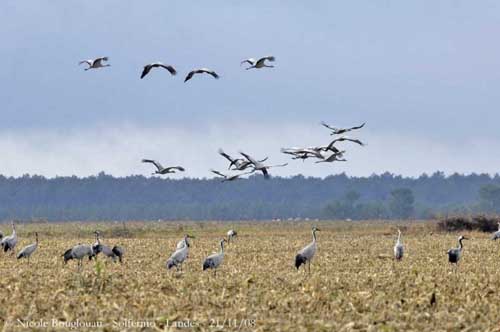
Numerous cranes winter in several parts of Extremadura in Spain, feeding in both the dehesa and the lowlands from October to February. They feed primarily on acorn, but they also consume other seeds according to the feeding areas.
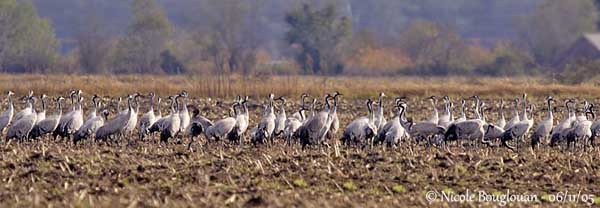
Between late afternoon and dusk, when the sun is slowly going down to the horizon, the calls are increasing and little by little, the cranes take off in groups or large flocks. We can hear them first, but they appear progressively in the distance.
The dark line is waving over fields and forests until to become sharper. The cranes are crossing the air, a mix of pink, purple and gold which sets the sky ablaze before to become completely dark.
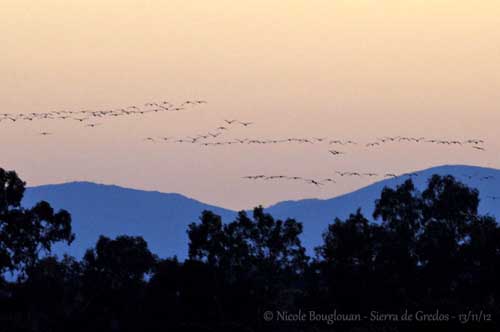
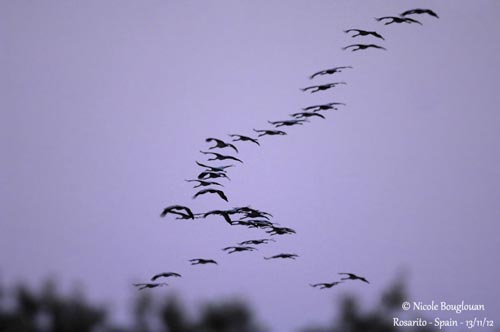
The cranes are now on the ground, ready for spending a quiet night. They will take off again at dawn to reach their feeding areas.
This behaviour will repeat every day during the wintering period, after which they will take off for their long trip to the breeding areas in Northern Europe.
About 150 000 cranes are wintering in Spain, with more than 50% in Extremadura, about 80 000 in 2011 scattered throughout the province. The others are found in Castilla-la-Mancha, Aragón and Andalucía where they frequent wet areas and well defined locations.
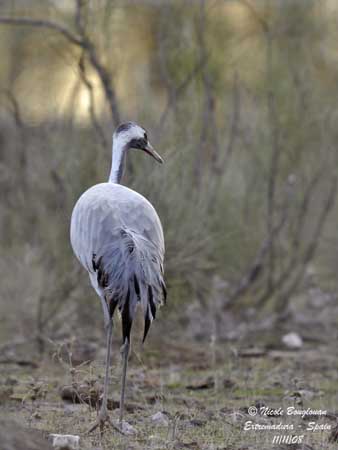
They are coming from Northern Europe and formerly, these populations crossed the Strait of Gibraltar to winter in North Africa. But now, and since about more than 50 years, they winter in the SW parts of the Iberian Peninsula, probably attracted by agriculture expansion in the dehesa. Several populations winter in other parts of Spain, but also in France and Germany. Belgium and Luxembourg shelter small wintering flocks.
The Common Crane was a breeding species in Spain until 1954s. Maybe next day, they will disappear too from this attractive country as other species have yet done…
